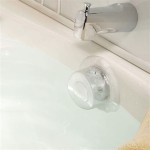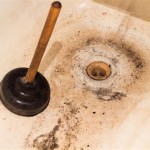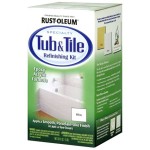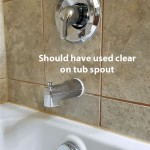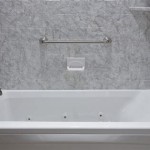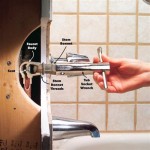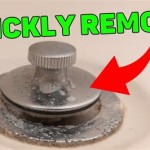Flying Ants Emerging from Bathtub Drain Pipe: Causes and Solutions
The sudden appearance of flying ants emerging from a bathtub drain pipe is a common household nuisance that can cause significant distress. Understanding the reasons behind this phenomenon and implementing effective preventative and remedial measures is essential for maintaining a pest-free home environment. This article explores the potential causes of this infestation, the lifecycle of flying ants, and strategies for eliminating and preventing their recurrence.
Often mistaken for termites, flying ants, also known as alates, are sexually mature winged reproductives that emerge from an established ant colony to mate and establish new colonies. Their presence indoors signals a larger nesting site nearby, either within the structure of the house or in the surrounding environment. The attraction to the bathtub drain pipe, in particular, often stems from the conditions it provides, such as moisture and access to organic matter, that are conducive to ant survival and potentially even nesting. Identifying the specific species of ant is beneficial for tailoring the treatment approach, though the general principles of ant control remain applicable across most common household varieties.
The appearance of flying ants is typically seasonal, often occurring in warmer months, particularly after rainfall. This is when environmental conditions are most favorable for nuptial flights – the mass airborne mating swarms that characterize ant reproduction. The sight of these winged ants inside a home should be taken seriously, as it suggests a problem that necessitates further investigation and action.
Understanding the Root Cause: Nesting and Attraction
The primary reason flying ants emerge from a bathtub drain pipe is the presence of a nearby ant colony. This colony might be located within the walls of the bathroom, under the bathroom floor, in the soil directly beneath the house, or even in a decaying tree stump in the yard. Ants are drawn to areas offering moisture, food, and shelter. Bathtub drain pipes, while seemingly inhospitable, can provide a surprisingly suitable environment due to several factors.
Firstly, drain pipes often accumulate organic matter, such as hair, soap scum, and other debris. This decaying material can serve as a food source for certain ant species. While not all ant species are attracted to the same types of food, many opportunistic ants will exploit available resources, especially when establishing a new colony or supplementing an existing one. Over time, this organic matter can create a small, nutrient-rich ecosystem within the drain system that supports the survival and potentially the nesting of a small ant population. This localized infestation within the drainpipe may be a precursor to a more substantial colony residing nearby.
Secondly, the consistently moist environment surrounding drain pipes is highly attractive to ants. Ants require water for survival, and the dampness within and around the pipes provides a readily available source. Leaky pipes, condensation, and even residual moisture after showering or bathing can all contribute to this conducive environment. Some ant species, like carpenter ants, are particularly drawn to damp wood, which they excavate to create their nests. Although carpenter ants are more commonly associated with structural damage, they may still utilize the moisture around a drainpipe, especially if there is wood framing or subflooring nearby that is susceptible to water damage.
Thirdly, the drain pipe offers a protected pathway into the home. Ants are particularly vulnerable to predators and environmental extremes. The enclosed space of the drain pipe provides a relatively safe and sheltered route, allowing them to access the interior of the house without exposing themselves to external threats. This is especially important for flying ants, as they are less agile and more susceptible to capture when not actively flying. The drainpipe acts as a convenient highway, allowing them to travel from their nest to the interior of the house. Furthermore, the drain pipe provides an ideal exit point for alates embarking on their nuptial flight, allowing them to disperse into the open air.
Identifying the Ant Species and Assessing the Infestation
Accurate identification of the ant species is crucial for effective control. While some ant species are merely a nuisance, others can cause significant damage to property. For example, carpenter ants can weaken wood structures by excavating galleries for their nests. Pavement ants may nest under concrete slabs and enter homes through cracks in the foundation. Odorous house ants, as the name suggests, emit a distinctive odor when crushed. Knowing the specific species allows for the selection of appropriate treatment methods and preventative measures.
Close examination of the ants themselves can often reveal their species. Key characteristics to observe include size, color, and the presence or absence of spines on the thorax. Online resources and local pest control professionals can assist in identifying the species based on these features. A magnifying glass may be helpful for observing smaller details. Photographs can also be taken and compared to images of common household ants online.
Beyond identifying the species, it is also important to assess the extent of the infestation. A few flying ants emerging from the drain pipe might indicate a small, localized nesting site. However, a continuous stream of ants or the presence of worker ants foraging for food in the bathroom suggests a larger and more established colony. Inspecting the surrounding areas, such as the walls, floors, and cabinets, for signs of ant activity is essential. Look for trails of ants, frass (ant droppings), or any structural damage that might indicate nesting sites. A thorough inspection can help determine the source of the infestation and guide the selection of appropriate treatment strategies.
Consider the frequency of sighting the ants. Are they present year-round, or only during specific seasons? Are they more abundant after rainfall? The answers to these questions can offer clues about the location of the colony and the factors influencing their activity. If the infestation is severe or persistent, it may be necessary to consult with a professional pest control service. They have the expertise and equipment to locate and eliminate ant colonies that are difficult to reach or identify.
Effective Strategies for Elimination and Prevention
Addressing a flying ant infestation requires a multi-pronged approach that combines immediate control measures with long-term preventative strategies. The goal is to eliminate the existing ants, disrupt their nesting habits, and prevent future infestations. Several effective methods can be employed to achieve these objectives.
Firstly, direct treatment of the ants emerging from the drain pipe is necessary to reduce their immediate presence. This can be accomplished by various methods, including using insecticidal sprays, dusts, or foams specifically designed for ant control. When using chemical treatments, it is essential to follow the manufacturer's instructions carefully and exercise caution to avoid exposure to humans and pets. Consider using traps designed to attract and kill ants. These are generally less hazardous than sprays and can be effective in reducing ant populations over time.
Pouring boiling water down the drain pipe can be a simple and somewhat effective method for killing ants that are present within the immediate vicinity of the drain. However, this method will not eliminate the entire colony and may not be suitable for certain types of plumbing. Another option is to use a mixture of borax and sugar. Borax is a natural insecticide, and sugar attracts ants. Mix the two ingredients in a small container and place it near the drain. The ants will carry the mixture back to their colony, eventually poisoning the entire nest.
Secondly, addressing the underlying conditions that attract ants to the drain pipe is crucial for long-term control. This includes eliminating sources of moisture, removing organic matter buildup, and sealing potential entry points. Repair any leaky pipes or faucets to reduce the amount of water available to ants. Regularly clean the drain pipe to remove hair, soap scum, and other debris that can serve as a food source. Pouring a mixture of baking soda and vinegar down the drain followed by hot water can help to clean and deodorize the pipe.
Thirdly, identifying and eliminating the ant colony is the most effective way to prevent future infestations. This may require locating the nest and treating it directly with an insecticide. However, locating the nest can be challenging, especially if it is located within the walls or under the floor. In such cases, it may be necessary to consult with a professional pest control service. They have specialized equipment and techniques for locating and eliminating ant colonies in difficult-to-reach areas.
Finally, preventative measures should be implemented to discourage ants from entering the home. This includes sealing cracks and crevices in the foundation, walls, and around windows and doors. Trimming vegetation away from the house to prevent ants from using it as a bridge. Storing food in airtight containers to prevent ants from accessing it. Maintaining a clean and clutter-free environment to reduce potential nesting sites. Regularly inspecting the property for signs of ant activity. By taking these preventative measures, it is possible to reduce the likelihood of future flying ant infestations.
What Are Those Flying Insects That Come Out Of The Drain

How To Stop Ants From Invading Your Bathroom Identification And Prevention Tips Tabor Pest Control

Ants In Your Bathroom Here S How To Get Rid Of Them Native Pest Management

Drain Fly Florida Environmental Pest Management

What Are These Flying Ants

Winged Carpenter Ants Plant Pest Diagnostics
Winning The Battle Against Aerial Ants Proven Methods On How To Get Rid Of Flying

Drain Flies Sewer Everything You Need To Know Dominion Pest Control

How To Get Rid Of Drain Flies Moth And Prevent An Infestation Pest Defence

How To Get Rid Of Drain Flies

